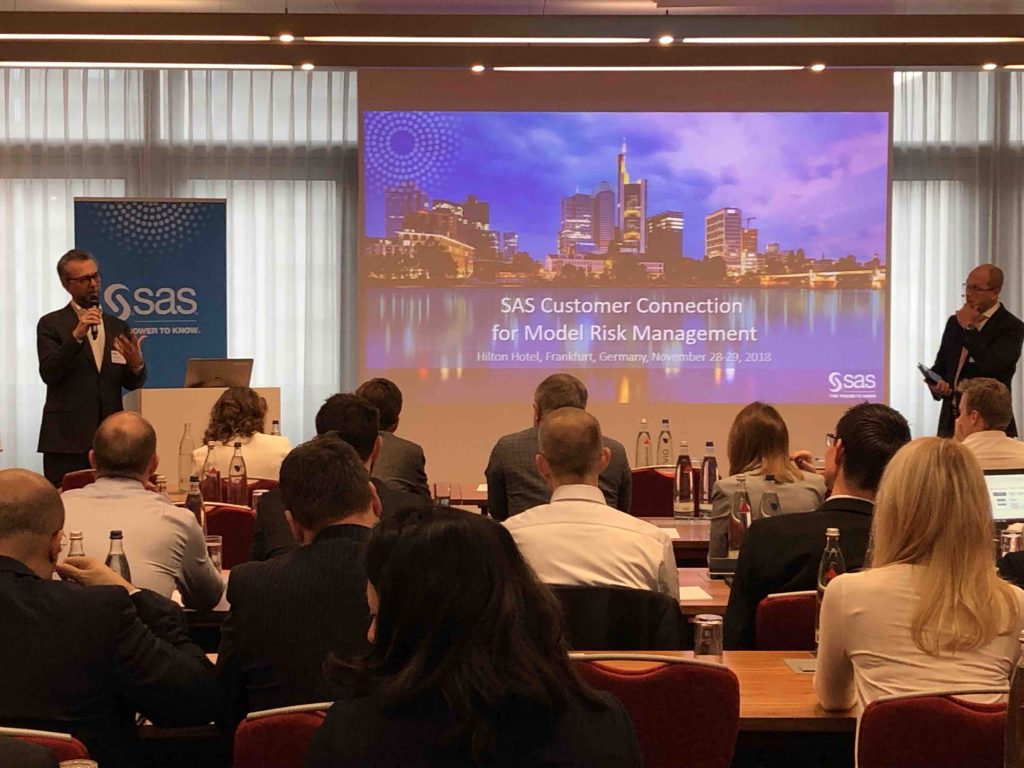Model risk management is an important issue for companies in a number of sectors. All models – to predict demand, for example, or to support business decision making pose some risk. But both model complexity and regulatory requirements are increasing around the world, and model risk management is, therefore, becoming considerably more important. This is particularly true in highly regulated sectors such as banking.
The importance of connection
This was evident at the recent SAS Customer Connection for Model Risk Management, held at the Hilton Hotel at Frankfurt Airport, which involved participants from 11 banks. The event started with a discussion about current developments in model risk management led by Peter Plochan of SAS. In his introduction, Peter pointed out that the question of model risk management has been an issue for 10 years or more.
He also, however, noted that model risk management evolves over time and will continue to do so. It is, therefore, essential that "front-runners" in model risk management continue to share their experiences. Everyone can learn from each other, including customers, SAS experts and consultants.
The leading SAS Model Risk Management solution is built on best practices that resulted from this kind of shared experience, said Renzo Traversini of SAS. And customer connection meetings are, therefore, important to ensure further development. Renzo also promised that SAS would continue to invest significantly in its core model risk management solution.
Experience in Europe
Speakers also discussed model risk management implementation in Europe. One said that it was important to understand the level of model risk in a bank and how to reduce it. The speakers approached this question from a variety of perspectives, including governance processes and quantitative model development/validation. However, everyone agreed that model risk management does not end with a central model inventory. This inventory is actually only the starting point.
Speakers noted that model risk management is developing rapidly, so it is important to act. Conference participants generally agreed that small bursts of speed in introducing model risk management, followed by ongoing expansion, was the most viable way to achieve the greatest business value.
Beyond regulatory risk
It became clear that model risk management is actually a new risk domain, rather than just part of regulatory risk. We should not underestimate the business advantage of functioning and efficient model risk management. Better transparency and compliance generated by reliable models are directly reflected in the balance sheet. For example, improved model risk management at one organization helped identify a flawed model, eliminating misallocations and resulting in a direct positive effect on profits.
It became clear that model risk management is actually a new risk domain, rather than just part of regulatory risk. We should not underestimate the business advantage of functioning and efficient model risk management. Click To TweetAn online survey during the conference about participants’ top priorities over the next year or two showed that the situation is no longer just about regulatory models, but also automated transparent monitoring of models. The increasing complexity of models, including the introduction of artificial intelligence, will further increase the challenges.
Thomas Moosbrucker of Deloitte noted that there is currently no clear regulation by the European Central Bank (ECB) that is comparable with the US SR 7/11. However, he also noted that several regulations deal with model risk management. For example, the ECB’s current focus is on nonfinancial risk. In his view, however, banks do not manage model risk from a purely regulatory point of view. The also consider added value to the business. One participant called for looking beyond workflow tools and inventory to let the “glamour of models” shine through.

